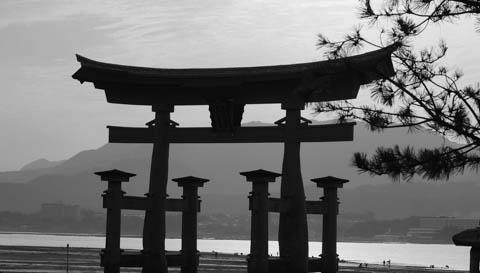How much does it cost to travel to Hiroshima?
You should plan to spend around $100 (¥15,384) per day on your vacation in Hiroshima. This is the average daily price based on the expenses of other visitors.
Past travelers have spent, on average for one day:
- $29 (¥4,472) on meals
- $9.71 (¥1,489) on local transportation
- $129 (¥19,697) on hotels
A one week trip to Hiroshima for two people costs, on average, $1,405 (¥215,373). This includes accommodation, food, local transportation, and sightseeing.
All of these average travel prices have been collected from other travelers to help you plan your own travel budget.
Independent Travel
Traveling Independently to Hiroshima has many benefits including affordabilty, freedom, flexibility, and the opportunity to control your own experiences.
All of the travel costs below are based on the experiences of other independent travelers.
Is Hiroshima expensive to visit?
Prices in Hiroshima are reasonable and comparable to your average travel destination. Hotels, food, and sightseeing are generally within normal price ranges.
Within Asia, Hiroshima is a somewhat more expensive destination compared to other places. It is in the top 25% of cities in Asia for its travel costs. While some cities in the region are more expensive, Hiroshima is generally more expensive than most.
For more details, and to find out if it's within your travel budget, see Is Hiroshima Expensive?
How much money do I need for a trip to Hiroshima?
The average Hiroshima trip cost is broken down by category here for independent travelers. All of these Hiroshima travel prices are calculated from the budgets of real travelers.
|
Category
|
Cost
|
|
Accommodation 1
(Double Occupancy)
|
¥19,697
($129)
|
|
Local Transportation 1
|
¥1,489
($10)
|
|
Food 2
|
¥4,472
($29)
|
|
Entertainment 1
|
¥826
($5)
|
|
Alcohol 2
|
¥922 -
2,765
($6 - 18)
|
Accommodation Budget in Hiroshima
Calculated from travelers like you
The average price paid for one person for accommodation in Hiroshima is $64 (¥9,849). For two people sharing a typical double-occupancy hotel room, the average price paid for a hotel room in Hiroshima is $129 (¥19,697). This cost is from the reported spending of actual travelers.
Looking for a hotel in Hiroshima? Prices vary by location, date, season, and the level of luxury. See below for options.
Transportation Budget in Hiroshima
Calculated from travelers like you
-
The cost of a taxi ride in Hiroshima is significantly more than public transportation. On average, past travelers have spent $9.71 (¥1,489) per person, per day, on local transportation in Hiroshima.
-
Transportation1
Taxis, local buses, subway, etc.
$9.71
¥1,489
How much does it cost to go to Hiroshima? Naturally, it depends on the dates. We recommend Kayak because they can find the best deals across all airlines.
The price of renting a car in Hiroshima will depends on dates, the type of car, the location, and your age. We recommend Kayak because they can find the best deals across all car rental companies.
Food Budget in Hiroshima
Calculated from travelers like you
-
While meal prices in Hiroshima can vary, the average cost of food in Hiroshima is $29 (¥4,472) per day. Based on the spending habits of previous travelers, when dining out an average meal in Hiroshima should cost around $12 (¥1,789) per person. Breakfast prices are usually a little cheaper than lunch or dinner. The price of food in sit-down restaurants in Hiroshima is often higher than fast food prices or street food prices.
-
Food2
Meals for one day
$29
¥4,472
Entertainment Budget in Hiroshima
Calculated from travelers like you
-
Entertainment and activities in Hiroshima typically cost an average of $5.39 (¥826) per person, per day based on the spending of previous travelers. This includes fees paid for admission tickets to museums and attractions, day tours, and other sightseeing expenses.
-
Entertainment1
Entrance tickets, shows, etc.
$5.39
¥826
Alcohol Budget in Hiroshima
Calculated from travelers like you
-
The average person spends about $12 (¥1,843) on alcoholic beverages in Hiroshima per day. The more you spend on alcohol, the more fun you might be having despite your higher budget.
-
Alcohol2
Drinks for one day
$12
¥1,843
Water Budget in Hiroshima
Calculated from travelers like you
-
On average, people spend $0.73 (¥112) on bottled water in Hiroshima per day. The public water in Hiroshima is considered safe to drink.
-
Water2
Bottled water for one day
$0.73
¥112
Hiroshima On a Budget
 Hiroshima, Japan
Hiroshima, Japan
Hiroshima is positioned on the coast of the Seto Inland Sea and is an industrial city made up of many zigzagging rivers and wide boulevard streets. Today Hiroshima is a modern and vibrant city with great food and an energetic nightlife, but the image that remains in most visitor's minds is the Hiroshima of 1945 when it became the horrific sight of the first atomic bomb attack. Hiroshima shares the colorful neon atmosphere of other major Japanese cities and its hard to recognize the city immortalized all those years ago on that fateful day.
Hiroshima's climate is humid subtropical. The winters are mild and the summers are hot and humid. August is usually the hottest month of the year. Rain can occur at any time of the year, but winter is usually the driest season. June and July usually have the most rain. The best time to visit is in October and November when there isn't as much rain and the temperatures are pleasant. If you're in town during the summer months, air conditioning is a must.
Sights
Peace Memorial Park is where you'll find most of the memorials relating to the atomic bomb. This area was destroyed by the bomb and there are now more than 50 memorials, statues, and structures in the park. It's a heartbreaking place to visit, but should not be missed during your time in Hiroshima. There's also a museum that educates the visitor on the events of that day, the damage, and the long term effects. Outside of the park there are several other museums that offer information on other aspects of that day. You should consider visiting Honkawa Elementary School Peace Museum, which tells of the school that was destroyed and those that lost their lives. Only one teacher and one student survived that day. Fukuro-machi Elementary School Museum is a comparable museum.
Chuo Park is a large green space in the middle of the city. In the area you'll find Hiroshima Castle, Gokoku Shrine, the Hiroshima Children's Museum, and the Hiroshima Museum of Art.
Hijiyama Park is a large park to the south of JR Hiroshima Station. In the area you'll find Hiroshima City Manga Library and they Hiroshima City Museum of Contemporary Art.
Other sights around town include Fudoin, Hiroshima City Transportation Museum, Hiroshima Prefectural Museum of Art, Mazada Museum, Mitaki-dera, and Shukkeien.
Neighborhoods
Hiroshima is divided into eight districts, or ku. Asaminami is the largest district, with the most comprehensive public transit. Minami is nearby. Naka-ku is where you'll find Hiroshima's business district as well as Peace Memorial Park. It's in the middle of the city. Higashi is on the east side of the city and is the location of Fudoin. Nishi, and Hiroshima-Nishi Airport, are on the western side of the city. This is not the city's main airport, which is actually outside of town. The other districts are Aki-ku, Asakita-ku, and Saeki-ku.
Activities
There are a variety of recreational venues in Hiroshima. There are several family friendly swimming pools. Going to a baseball game is also a unique and fun experience in Hiroshima.
The city also hosts several great festivals throughout the year. These include the Flower Festival in May, the Sake Festival is in October and the Food Festival which is also in October. On the anniversary of the atomic bomb being dropped there is the Peace Memorial Ceremony that begins in the morning.
Food and Dining
Hiroshima's most famous cooking style is okonomiyaki. This translates to mean "cook it as you like it". The dish is actually a "pancake" that is made with egg, cabbage, soba noodles, meet, seafood, or cheese. It's grilled in front of you and covered in okonomiyaki sauce. It's quite delicious and an experience that you must have while you're in Hiroshima.
Hiroshima is also famous for its oysters, which are available between the months of October and March. Another local specialty is Momiji Manju, which is a type of pastry filled with any number of things including red beans, cream cheese, custard, or fruit flavors.
Transportation
In Japan, trains are one of the fastest and lowest cost means of transportation. Getting a
Japan Rail Pass can save you money if you plan to stay for several days or more. Regional and nation-wide passes are available, usually for the number of days of your choice.
Hiroshima has a comprehensive tram system. It can be slow moving, but it is reliable. Most of the lines begin at JR Hiroshima Station and run every ten minutes during the day. One day passes are available.
Buses travel throughout Hiroshima and into the suburbs. Buses are more frequently used by local than visitors, but they can be helpful if you need to travel outside of the city center.
There is a metro system that connects the city center with the northern suburbs. There aren't many tourist attractions along the route.
There are wide sidewalks around the city that make biking easy. The paths along the rivers are particularly pleasant.
Related:
Looking for a
hostel in Japan? In search of a
party in Tokyo? Traveling alone to
Osaka or
Tokyo?
We've been gathering travel costs from tens of thousands of actual travelers since 2010, and we use the data to calculate average daily travel costs for destinations around the world. We also systematically analyze the prices of hotels, hostels, and tours from travel providers such as Kayak, HostelWorld, TourRadar, Viator, and others. This combination of expenses from actual travelers, combined with pricing data from major travel companies, gives us a uniqe insight into the overall cost of travel for thousands of cities in countries around the world. You can see more here: How it Works.
 Hiroshima, Japan
Hiroshima, Japan

 Budget Your Trip is all about finding out how much everything costs so that you can travel cheaper and longer. Created by avid travelers Laurie and Bryan, our goal is to help you plan your next trip on the right budget. With average daily travel costs that are calculated from the budgets of real travelers, plus an analysis of hotel and tour prices, you can find out how much money you need to plan your next adventure. We also have plenty of travel advice, accommodation reviews, and activity suggestions.
Budget Your Trip is all about finding out how much everything costs so that you can travel cheaper and longer. Created by avid travelers Laurie and Bryan, our goal is to help you plan your next trip on the right budget. With average daily travel costs that are calculated from the budgets of real travelers, plus an analysis of hotel and tour prices, you can find out how much money you need to plan your next adventure. We also have plenty of travel advice, accommodation reviews, and activity suggestions.